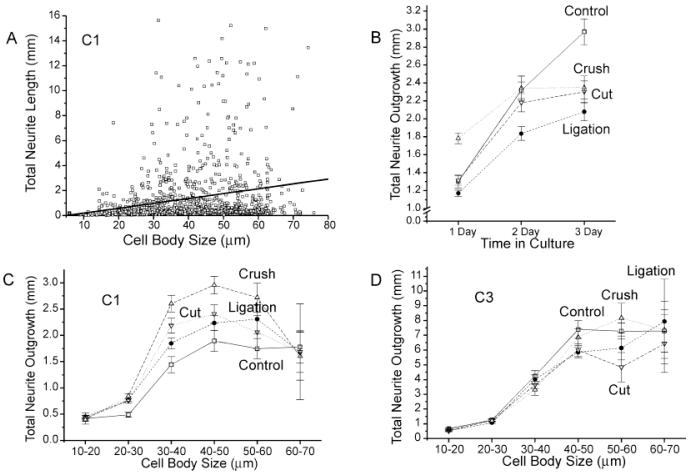Fig. 6.
Effects of conditioning lesions on total neurite length. A: Plot illustrating the distribution of total neurite lengths for individual neurons in the control condition by cell body size after 1 day in vitro. A best-fit line also is shown. Note that there is considerable variability in total outgrowth for neurons of any size category, but that neurons with larger cell bodies are more likely to extend processes with greater total lengths. B: Effects of conditioning lesions on neurite outgrowth for the entire neuronal population over time in culture. Note that only neurons in the crush protocol condition show an increase in average total neurite outgrowth compared with controls at 1 day in vitro (P < 0.000005, unpaired Student’s t-test), and that, by day 3 in vitro, average total neurite outgrowth in the control condition is significantly greater than all conditioning-lesioned condition (P < 0.002 or lower, unpaired Student’s t-test). C,D: Effects on conditioning lesions on total neurite lengths for neurons in different size classes after 1 (C) and 3 days (D) in vitro. Note that although the average total neurite outgrowth for the entire neuronal population after 1 day in vitro is only increased in the crush protocol condition, average total neurite lengths for neurons in most cell size categories are increased in all conditioning-lesioned conditions at day 1. Note also that because the numbers of neurons in each size category differ between treatment conditions, panels C and D cannot be directly compared with panel B, in which neurite lengths for all neurons in an individual experiment were pooled. Total neurite length in ligation, crush, and cut protocol conditions differ significantly from controls at P < 0.003, P < 0.0005, and P < 0.002, respectively, by using MANCOVA.

